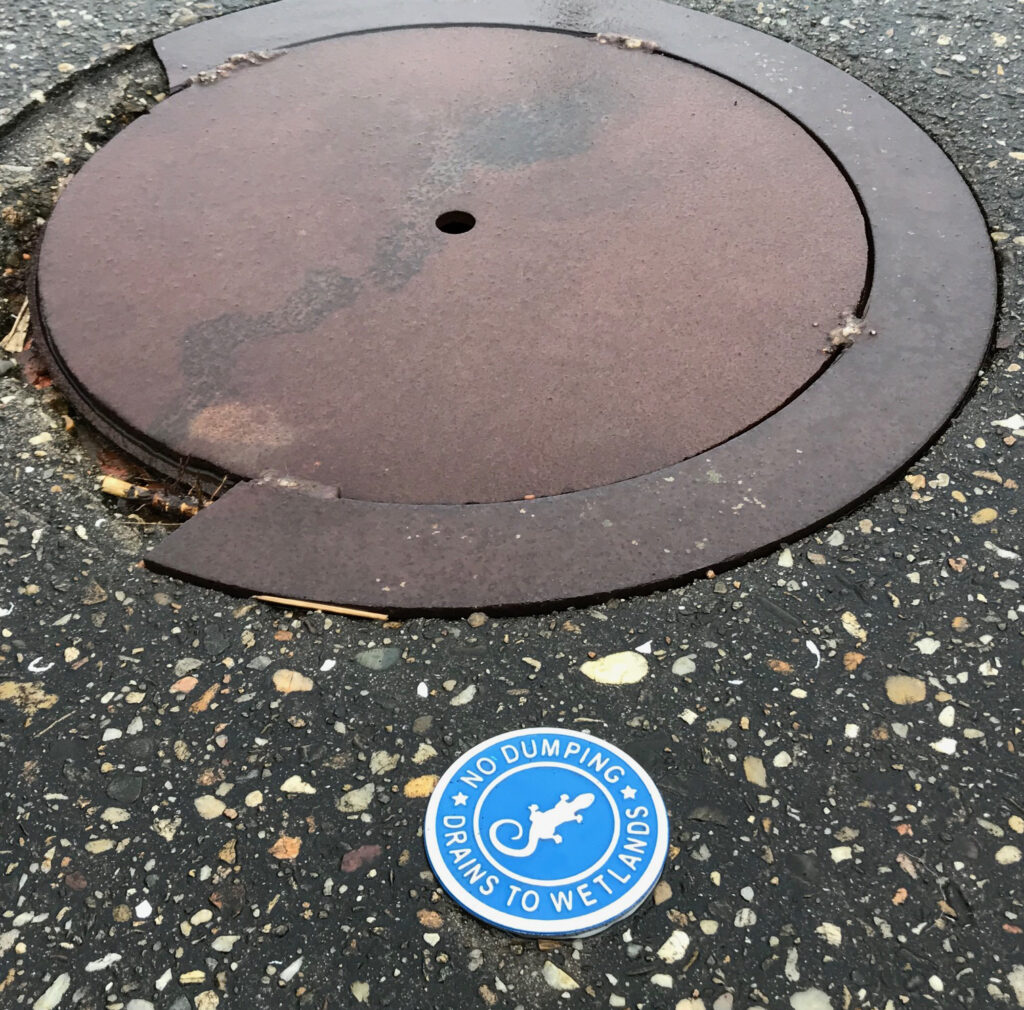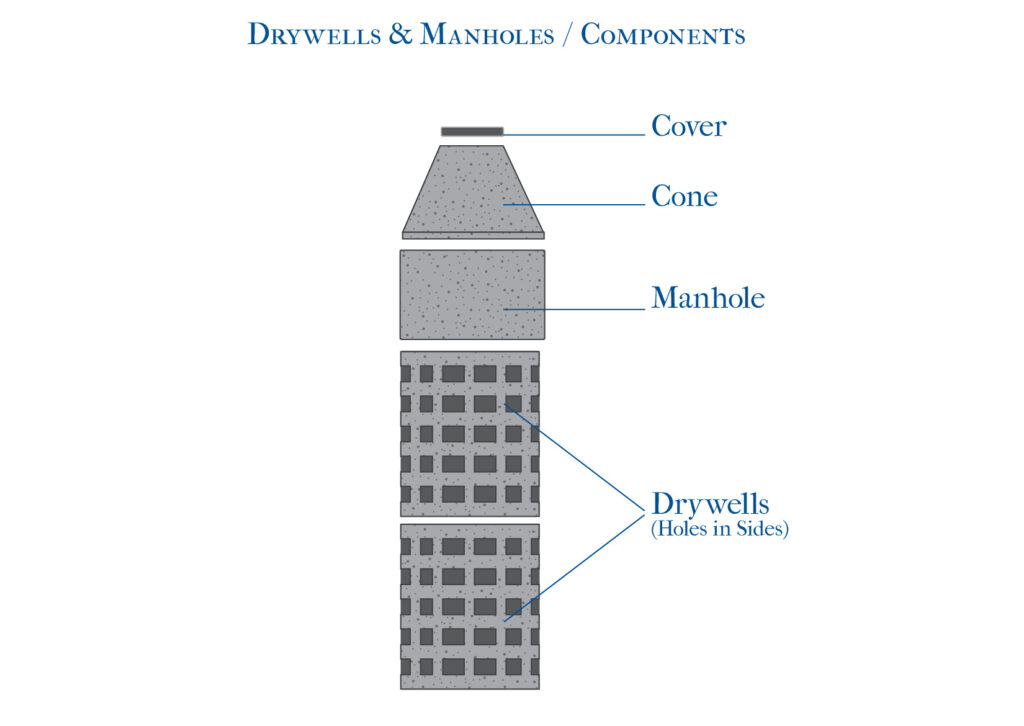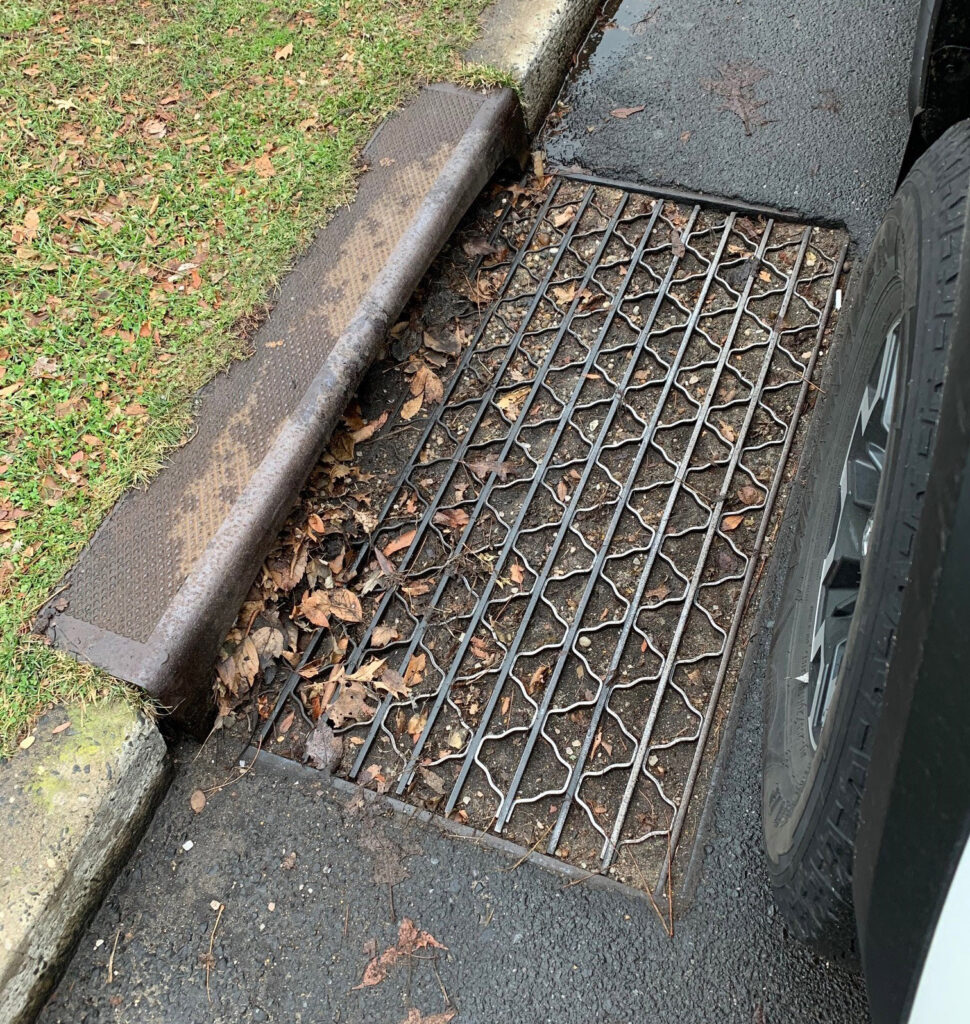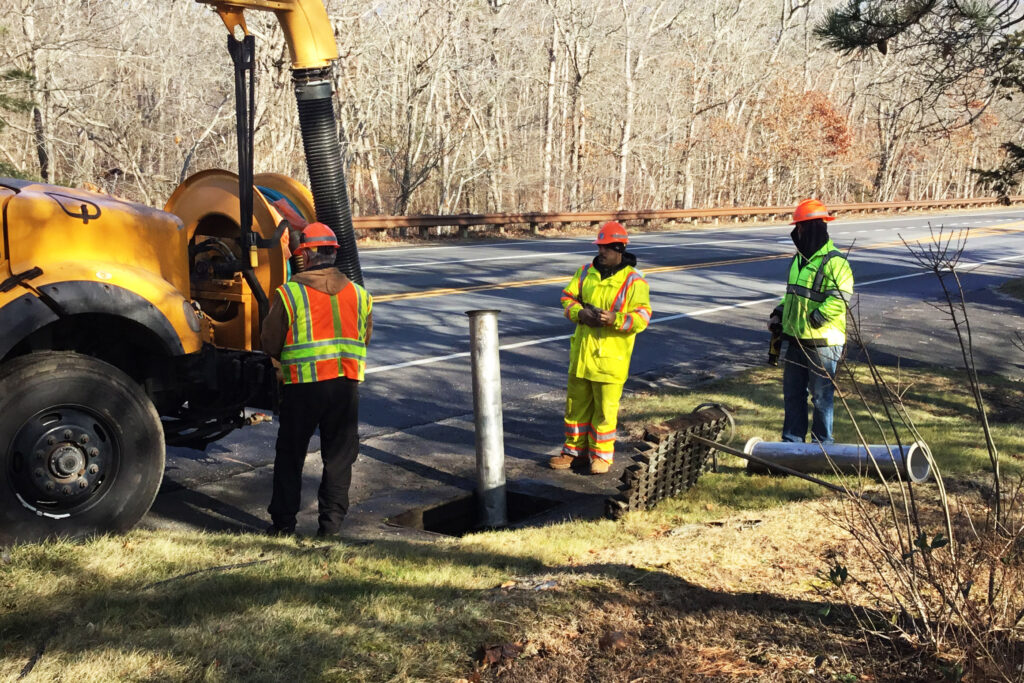We have had a lot of rain lately and you’ve probably noticed that some roads drain well and some roads are chronically flooded. There are a lot of variables that contribute to flooded roads, and clogged leaching basins are just one of them.
Road runoff is a term easily misunderstood. Runoff of all types—whether off roads, parking lots, lawns or roofs– can cause real problems to nearby wetlands and nearshore waterbodies. Runoff carries contaminants and according to the Peconic Estuary Program’s Community Stormwater Stewardship program, the most common contaminants in runoff are: motor oil, sediment, pet waste, garbage, fertilizer and pesticides. At Georgica Pond, minimizing runoff into the pond is one of our key water quality improvement objectives.

Working with a group of stakeholders, Friends has been helping develop a plan for the area around the rest stop on Rt. 27 at Georgica Pond. Road runoff at this site is responsible for erosion and high bacteria counts after heavy rainfall.
The New York State Department of Transportation (NYSDOT) manages Rt. 27, and a series of leaching basins have been installed along Rt. 27 to capture road runoff and keep the highway as dry as possible. Leaching basins are designed to catch runoff and are either connected to a series of underground pipes which drain somewhere (hopefully not directly into a water body like at Georgica Cove) or simply catch the water and let sediment and other detritus settle and allow the water to slowly recharge back into the soil.

But leaching basins must be maintained and if not, stormwater can flow right over them and into nearby wetlands.

An inspection of leaching basins around the rest stop revealed that they were full of detritus. Thankfully, the NYSDOT responded quickly and cleaned them out. Now, the right frequency of maintenance can be worked out with the NYSDOT.

What you can do to help to reduce contaminants and stormwater runoff into Georgica Pond:
- Greatly reduce fertilizer & pesticide use. Use time-release organic fertilizer or compost tea instead of synthetic fertilizer.
- Pick up pet waste and dispose in the toilet or in the trash.
- Divert water from your gutters to the lawn, a rain barrel or rain garden (a simple depression with native plants that catches runoff).
- Plant a native plant buffer at the edge of wetlands or ponds.
- Replace pavement with permeable paving or permeable pavers such as techno bloc.
- Report construction or post construction runoff to the Town or Village. (Construction sites should have erosion and sediment controls such as hay bales or silt fences in place to intercept all runoff before it reaches the road).
